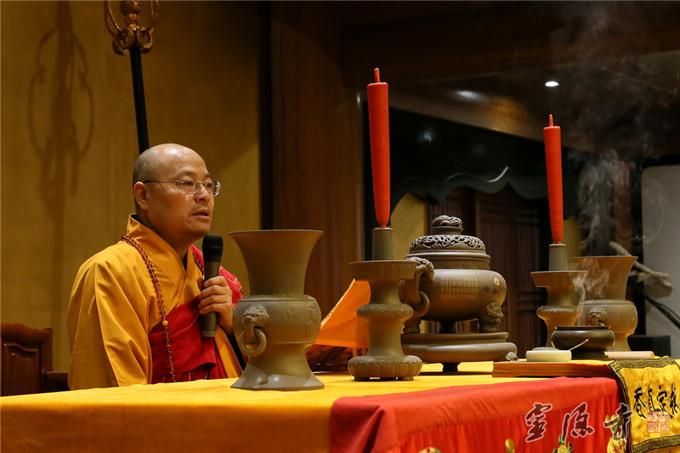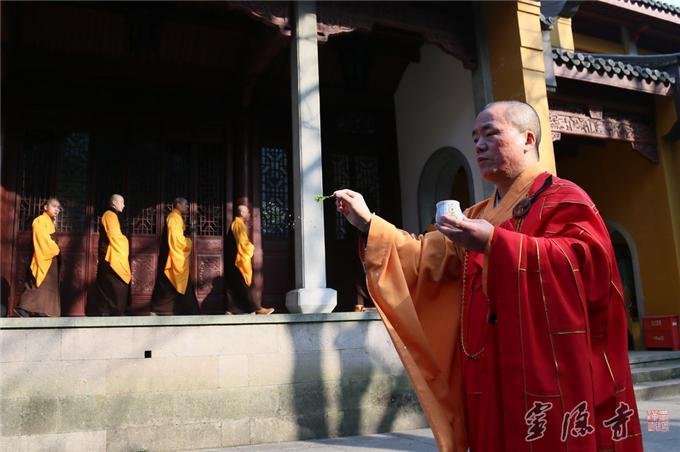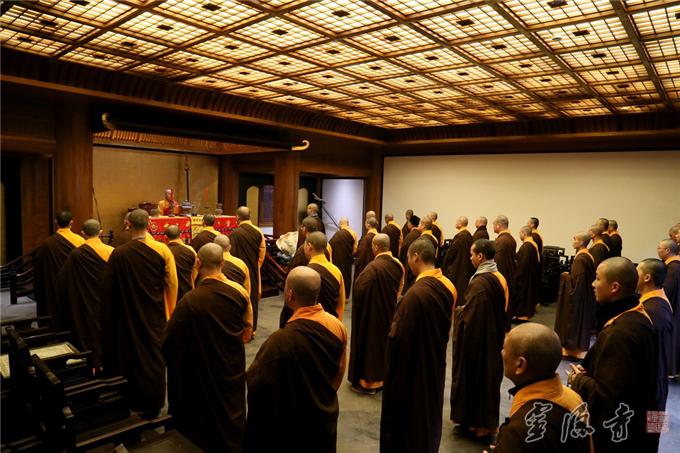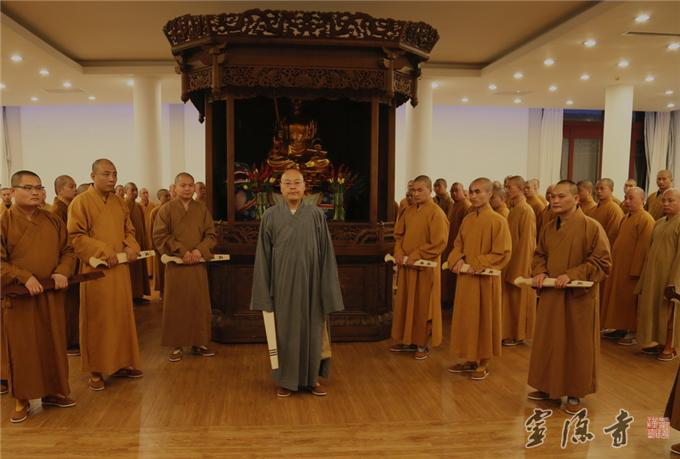


编辑:LY-Temple 日期:2015-01-11 10:29
Lingyin Temple was built during the first year of the reign of Emperor Jincheng, the Eastern Jin Dynasty (326 A.D.). With a long history of nearly 1700 years, Lingyin Temple is one of the ten well-known Chinese ancient temples. This seven-day Chan session is a unique tradition of Chan Buddhism, which places equal emphasis on Buddhism studies and agricultural production, and it starts from January 9 to 15 (from 19 to 25 of the eleventh lunar month). This Chan session includes a series of activities for the general public to practice Buddhism – sitting with penalties of being struck with a flat wooden stick for sleepiness or lapses of concentration (zuo xiang; "xiang" refers to a flat wooden stick used during periods of meditation to remedy sleepiness or lapses of concentration), walking around the room with a flat wooden stick (xing xiang), Chan practice and meditation. After the evening class, the Buddhist monks of East and West sequences went to the abbot’s room to ask the abbot for a leave of life and death (a leave of absence, sheng si jia). Venerable Abbot Guangquan benevolently gave them his instruction that every one should cherish this seven-day Chan session organized by Lingyin Temple for the first time in decades and dedicate themselves on the practice of Buddhism without being distracted all the time.

Venerable Abbot Guangquan has benevolently given the Buddhist monks his instruction.

Master Yiguang, the monastic manager of Lingyin Temple, has taken the lead to
sprinkle water for purification.

Buddhist monks are listening attentively to Venerable Abbot Guangquan.

Buddhist masters have set out walking around the room with a flat wooden stick.

Checking around with a flat wooden stick